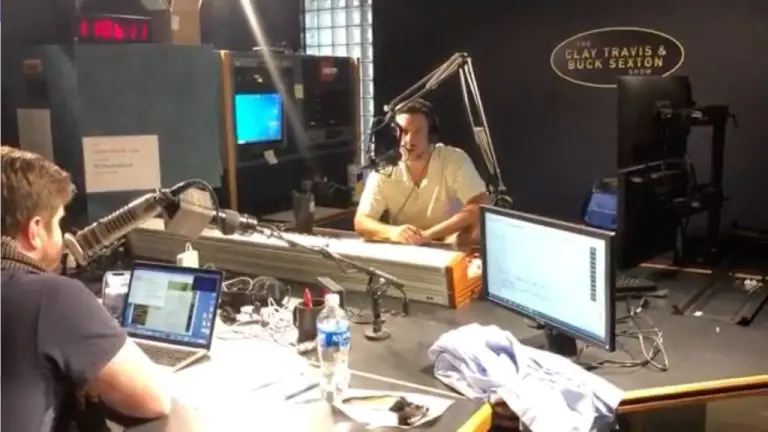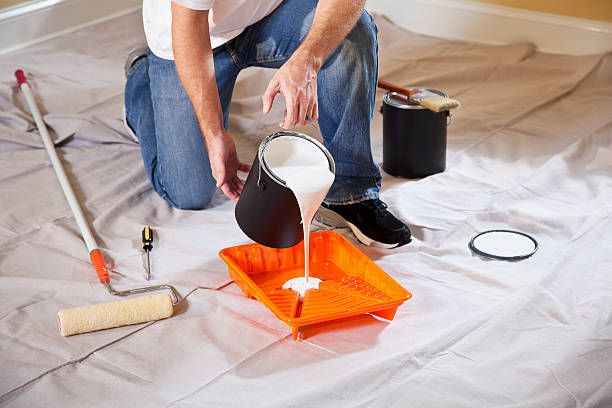Is Pottery An Expensive Hobby?
Pottery is an art form that involves shaping clay into creative designs and functional objects like mugs, plates, vases and more. It requires practice and skill to master the techniques of hand-building, wheel throwing, glazing and firing clay. While pottery can be enjoyed casually as a hobby by beginners, pursuing pottery seriously requires significant investments of time, money and dedication.
But is pottery truly an “expensive” hobby relative to other creative pursuits? The cost of supplies, equipment, studio access and instruction can add up quickly. However, the exact costs vary greatly based on factors like location, studio fees, type of pottery and more. Defining “expensive” is also subjective to one’s own budget and interests. This article will analyze the typical costs associated with pottery and examine how the expenses compare to other common hobbies.
Cost of Supplies
Some of the biggest costs in pottery are the supplies needed to actually create pieces. The main supplies include clay, glazes, tools, and access to a kiln.
Clay can range greatly in cost depending on the type and quality. Basic clay like stoneware may cost $20-30 for 25lbs. More specialized porcelain clays can cost $40-60 for 25lbs (https://www.thetomahawk.com/archives/jean-ann-savery-shapes-young-lives-while-teaching-them-to-mold-clay-into-art/article_c0ccd9d0-8c9e-55ae-a77c-6a0cff9d6be9.html). Glazes used to decorate pieces also vary in cost, with basic glazes starting around $20/pint while specialized glazes can cost $30-40.
Basic pottery tools like ribs, trimming tools, and sculpting tools often cost $5-15 each. As collections grow, the costs add up. Buying a personal wheel is a big investment, usually $300+ for decent quality.
Kiln costs are also a major factor. Small tabletop kilns start around $300, while large gas or electric kilns easily cost upwards of $2000 just for the initial purchase. Firing fees at studios with shared kilns often range $5-20 per firing.
Studio Fees
Pottery studios require space and equipment, which means there are costs involved for potters to have access to a studio. Many potters rent studio space on a monthly basis from community studios or shared studio spaces. According to Red Barn Pottery, community studios rent studio space for around $250 per month. This covers the costs of studio space and equipment usage, but potters must still pay for their own clay and firing fees.
Renting a private studio space can be even more expensive. Potters on Reddit report paying $250-$400 per month for unlimited studio access including some clay. Additional clay then costs around $1.80 per pound. Rental rates vary based on location, amenities, and studio size.
The monthly cost of studio space should be factored into the ongoing expenses of pottery as a hobby. Studio rental provides access to space and equipment like wheels and kilns that would be costly to acquire individually.
Lessons and Classes
The cost of pottery classes can vary greatly depending on whether you take group classes, private lessons, or specialized workshops. According to Wheel & Clay, group lessons at a local studio typically range from $20-$40 per class or $100-$300 for a full session. More comprehensive beginner group classes may cost $150-$400. Private lessons with an instructor often start at $30/hour and can go up to $100/hour or more. Specialized weekend workshops and master classes can cost anywhere from $150 for a 1-day workshop to $500+ for multi-day intensives.

Factors like class size, instructor expertise, kiln/studio fees, and geographic location impact pricing. Larger metro areas like Los Angeles, New York and Chicago tend to have pricier options, while smaller towns may offer lower rates. However, quality instruction can still be found at affordable community colleges and local pottery studios across the country. Consider both group and private lessons to fit your budget and learning needs.
Firing and Kiln Fees
One of the main ongoing costs of pottery is paying for firing your work in a kiln. Most hobby potters do not own their own kiln and rely on shared studio kilns or pay per firing at a local ceramic studio. The cost per firing can range from $5-25 depending on the size of the kiln and how many pieces you are firing.
According to this article, a small 3 kW kiln costs around £0.30 per hour to run in the UK. For a typical bisque firing taking 6-8 hours, the electricity cost would be around £2-3. A longer 12-14 hour glaze firing could cost £4-5 in electricity alone. In addition to electricity, the studio must factor in maintenance, kiln wash, repairs, etc. This is why firing fees are usually more than just the electrical cost.
Owning your own kiln avoids per-firing fees but has its own costs. Kiln maintenance, repairs, kiln wash and thermocouple replacements can add up over time. New kilns cost anywhere from $1000 for a small tabletop version up to $6000+ for a large floor model. Overall firing and kiln fees represent an ongoing investment for any potter looking to produce finished glazed ceramic work.
Comparing to Other Hobbies
It can be useful to compare the cost of pottery to some other popular hobbies. Photography, knitting, and woodworking are three hobbies that have varying costs associated with them.
Photography as a hobby can range from very affordable to extremely expensive. With smartphones being so advanced these days, basic photography is possible with a device many people already own. Dedicated starter DSLR camera kits can be had for $500-800. More advanced gear, accessories, studio equipment, and software can quickly drive up costs to thousands of dollars for serious hobbyists looking to have top-end equipment (Reddit, 2022).
Knitting has relatively low startup costs. Quality yarn, needles, and basic supplies can be purchased for under $100 in most cases. The recurring cost comes from purchasing new yarn for projects, which can vary greatly based on the type of yarn used and size of the projects. Many knitters budget $50-150 per month for supplies (Luxury Columnist, 2022).
Woodworking requires more investment upfront for tools and workspace setup, with $1000 being a realistic budget for a starter workshop. Ongoing costs come from purchasing wood, which can be managed by only buying enough for each project. But exotic woods, lumber for large projects, and upgraded tools increase costs quickly for more advanced woodworkers (Mr. Money Mustache Forums, 2017).
Going Pro
For hobbyist potters thinking about turning their passion into a profession, there are additional costs to consider when going pro. The first major expense is setting up a pottery studio. At minimum, you’ll need adequate space for a pottery wheel, hand-building area, storage for clay and tools, a kiln room, and workspace for glazing and decorating. Renting a studio can cost $400-$1000 per month depending on size and location. Purchasing or building a studio requires significant capital. Expect to spend tens of thousands for the space alone, not including equipping the studio.
You’ll also need higher quality equipment as a professional potter. Production pottery wheels start around $2000. Large electric kilns for heavy use are $5000-$10,000. Continuous kilns for large scale production can be upwards of $30,000.Quality raw materials like clay and glazes need to be purchased in bulk to get wholesale rates. Marketing and selling finished wares is another major expense. A good website with ecommerce capabilities costs $2000+ to build and maintain. Advertising and promotional budgets quickly add up. Participating in craft shows and fairs costs hundreds per event in booth fees, not to mention time and travel. Overall, aspiring professional potters need to invest at least $25,000-$50,000 to properly set up their business.
Cost Saving Tips
Buying used or second-hand tools and equipment can help keep costs down when getting started with pottery. Check classified ads, thrift stores, garage sales, and online marketplaces for quality used wheels, kilns, and hand tools at a fraction of retail price (https://asilasilnere.online/oscqwhubvr). Reusing existing tools also has environmental benefits.
Placing group orders for clay, glazes, and other pottery materials can qualify for bulk discounts with manufacturers and distributors. Consider partnering with a local studio, class, or club to buy supplies together and split shipping costs (https://saygesicg.online/yhmajgpqwq). Just 25 lbs of clay may cost $30, but 500 lbs could average just $15 per 25 lb bag.
Making your own clay and glazes allows complete control over materials and results. While more labor intensive, hand mixing ceramic materials can greatly reduce material costs. Local clay deposits and homemade glaze recipes using common ingredients can produce quality results (https://julmeni.online/owdqqqwoii). However, care should be taken with firing temperatures and glaze ingredients.
Is it Worth the Cost?
While the upfront costs of getting started in pottery can seem high, most hobbyists find the value is well worth the investment. As with any hobby that requires specialized tools and equipment, there are unavoidable start-up costs, but once those initial purchases are made, the ongoing expenses tend to level out.
The intangible benefits of pottery as a relaxing, creative outlet for self-expression and satisfaction often outweigh the financial costs for many enthusiasts. Achieving a sense of accomplishment from designing, sculpting, and firing your own pieces can be extremely rewarding.
As cited on Soul Ceramics, the satisfaction from making your own functional art is a key motivator for potters. Having beautiful handcrafted mugs, bowls, and vases you created yourself brings joy and pride.
While not cheap, pottery offers enriching benefits beyond monetary value. With some smart choices as you build your studio, pottery can be an affordable creative outlet that provides a lifetime of enjoyment.
Conclusion
There are a variety of costs associated with pottery as a hobby. The initial supplies like a potter’s wheel, clay, tools, and workspace can add up quickly. Ongoing costs for studio fees, lessons, kiln firing, and materials can also become expensive over time.
The overall cost to an individual depends largely on their level of involvement with pottery. For a beginner taking casual lessons and firing their work occasionally, costs may be minimal. For a committed hobbyist with their own equipment and frequent studio time, expenses will be much higher.
Compared to other creative hobbies, pottery may fall somewhere in the middle in terms of affordability. It requires significant equipment and space, which adds cost. However, it’s more accessible than hobbies like glassblowing that rely on extremely specialized tools.
For any hobby, costs should align with the value it brings to one’s life. Pottery offers creative fulfillment and satisfaction difficult to quantify. With smart strategies and reasonable expectations, it can be enjoyed at varying budget levels.





